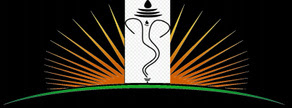When comparing TOPCon, HJT (Heterojunction), and PERC (Passivated Emitter and Rear Cell) solar cell technologies, each has its unique advantages and characteristics:
1. TOPCon (Tunnel Oxide Passivated Contact)
- Efficiency: High efficiency potential (up to 24% or more).
- Structure: Utilizes a thin layer of silicon oxide to create a passivated contact, improving carrier collection.
- Performance: Better performance in low-light conditions and higher temperatures compared to traditional cells.
- Manufacturing: More complex than PERC, but offers significant efficiency gains.
2. HJT (Heterojunction)
- Efficiency: Also reaches high efficiencies (around 24% or more).
- Structure: Combines crystalline silicon with thin layers of amorphous silicon, providing excellent passivation.
- Performance: Very good temperature coefficients, leading to better performance in hot climates and partial shading.
- Manufacturing: Generally has lower material consumption and can be less environmentally intensive.
3. PERC (Passivated Emitter and Rear Cell)
- Efficiency: Good efficiency (around 20-22%), but lower than TOPCon and HJT.
- Structure: Features a passivated rear surface, which enhances light absorption and reduces recombination losses.
- Performance: Improved performance in low-light conditions compared to standard solar cells, but not as high as TOPCon or HJT.
- Manufacturing: More established and widely used, making it less expensive to produce compared to the other two.
Summary
- Efficiency: HJT and TOPCon lead in efficiency.
- Temperature Performance: HJT excels in higher temperatures.
- Cost: PERC is typically cheaper and more widely adopted.
- Complexity: TOPCon and HJT are more complex to manufacture but offer better efficiencies and performance.
The choice among these technologies often depends on specific project requirements, budget, and intended application.



No comments:
Post a Comment